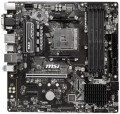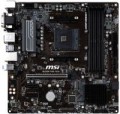Features
The general specialization of the motherboard is the type of tasks for which it is optimized. It should be noted that the division according to this indicator is often rather conditional, models similar in characteristics may belong to different categories. However, the data on specialization greatly simplifies the choice.
In addition to the traditional "motherboards"
for home and office, nowadays you can find solutions
for high-end PCs (High-End Desktop) and
for servers, as well as
gaming boards and models
for overclocking(the last two options are sometimes combined into one category , however, these are still different types of motherboards). There are also specialized models
for cryptocurrency mining, but very few of them are produced — especially since many boards that originally had a different purpose are suitable for mining (see "Suitable for mining").
Here is a more detailed description of each variety:
— For home and office. Motherboards that do not belong to any of the more specific types. In general, this kind of "motherboards" is very diverse, it includes options from low-cost motherboards for modest office PCs to advanced models that come close to gaming and HEDT solutions. However, for the most part, solutions from this category
...are designed for simple everyday tasks: working with documents, web surfing, 2D design and layout, games in low and medium quality, etc.
— Gamer's. Boards originally designed for use in advanced gaming PCs. In addition to high performance and compatibility with powerful components, primarily video cards (often several at once, in SLI and/or Crossfire format — see below), such models usually also have specific features of a gaming nature. The most noticeable of these features is the characteristic design, sometimes with backlighting and even backlight synchronization (see below), which allows you to organically fit the board into the original design of the gaming station. The functionality of gaming boards may include an advanced audio chip, a high-end network controller to reduce lags in online games, built-in software tools for tuning and optimizing performance, etc. Also, such models may provide advanced overclocking capabilities, sometimes not inferior to the capabilities of specialized boards for overclocking (see below). And sometimes the border between gaming and overclocking solutions is generally erased: for example, individual boards positioned by the manufacturer as gaming ones, in terms of functionality, can more likely be related to overclocking models.
— For overclocking. High-performance boards with an extended set of overclocking tools — improving system performance by fine-tuning individual components (mainly by increasing the clock frequencies used by these components). On most conventional motherboards, this setup involves considerable complexity and risk, it is usually an undocumented feature and is not covered by the warranty. However, in this case, the situation is the opposite: boards "for overclocking" are called so because the possibility of overclocking was originally incorporated in them by the manufacturer. One of the most noticeable features of such models is the presence in the firmware (BIOS) of special software tools for overclocking management, which makes overclocking as safe as possible and affordable even for inexperienced users. Another feature is improved compatibility with built-in overclocking tools provided in advanced processors, RAM modules, etc. Anyway, this particular type of board will be the best choice for those who want to build a fairly powerful PC with the ability to experiment in terms of performance.
— HEDT (High End Desktop). Motherboards designed for high-performance workstations and other PCs of a similar level. In many ways, they are similar to gaming ones and are sometimes even positioned as gaming ones, but they are designed more for general performance (including in professional tasks) than for confident work with games. One of the key features of such "motherboards" is the extensive functionality for working with RAM: they provide at least 4 slots for "RAM", and more often 6 or more, the maximum RAM frequency is at least 2500 MHz (and more often 4000 MHz and higher ), and the maximum volume is at least 128 GB. The rest of the characteristics are usually at a similar level. Also, the firmware may provide tools for overclocking, although in terms of this functionality, such boards are most often still inferior to overclockers. Note that such solutions can initially be positioned as gaming; the basis for categorization in the HEDT category in such cases is the fulfillment of the above criteria.
— For the server. Motherboards specially designed for servers. Such systems are noticeably different from conventional desktop PCs — in particular, they work with large volumes of drives and have increased requirements for the speed and reliability of data transfer; accordingly, to build servers, it is best to use specialized components, including motherboards. Among the main features of such motherboards are an abundance of slots for RAM (often more than 4), the ability to connect numerous drives (necessarily more than 4 SATA 3 slots, often 8 or more), as well as support for special technologies (like ECC — see below) . In addition, such boards can be made in specific form factors such as EEB or CEB (see "Form Factor"), although more traditional options are also found.
— Designed for mining. Motherboards specially designed for cryptocurrency mining (BitCoin, Ethereum, etc.). We emphasize that we are not just talking about the possibility of such an application (see “Suitable for mining”), but that the motherboard is initially positioned as a solution for creating a cryptocurrency “farm”. Recall that mining is the extraction of cryptocurrency by performing special calculations; such calculations are most conveniently carried out using several high-performance video cards at once. Accordingly, one of the distinguishing features of mining boards is the presence of several (usually at least 4) PCI-E 16x slots for connecting such video cards. However, this category of “motherboards” has not received much distribution: similar characteristics are also found among more general-purpose boards, it is quite possible to achieve performance sufficient for efficient mining on them.Max. clock frequency
The maximum RAM clock speed supported by the motherboard. The actual clock frequency of the installed RAM modules should not exceed this indicator — otherwise, malfunctions are possible, and the capabilities of the “RAM” cannot be used to the fullest.
For modern PCs, a RAM frequency of
1500 – 2000 MHz or
less is considered very low,
2000 – 2500 MHz is modest,
2500 – 3000 MHz is average,
3000 – 3500 MHz is above average, and the most advanced boards can support frequencies of
3500 – 4000 MHz and even
more than 4000 MHz.
XMP
The ability of the motherboard to work with RAM modules that support
XMP (Extreme Memory Profiles) technology. This technology was developed by Intel; it is used in motherboards and RAM blocks and only works if both of these system components are XMP compliant. A similar technology from AMD is called AMP.
The main function of XMP is to facilitate system overclocking (“overclocking”): special overclocking profiles are “sewn” into the memory with this technology, and if desired, the user can only select one of these profiles without resorting to complex configuration procedures. This is not only easier, but also safer: every profile added to the bar is tested for stability.
HDMI version
HDMI connector version (see above) installed in the motherboard.
— v.1.4. The earliest of the standards found nowadays, which appeared back in 2009. Supports resolutions up to 4096x2160 inclusive and allows you to play Full HD video with a frame rate of up to 120 fps — this is enough even for 3D playback.
— v.1.4b. A modified version of v.1.4 described above, which introduced a number of minor updates and improvements — in particular, support for two additional 3D formats.
— v.2.0. Also known as HDMI UHD, this version introduced full 4K support, with frame rates up to 60 fps, as well as the ability to work with 21:9 ultra-widescreen video. In addition, thanks to the increased bandwidth, the number of simultaneously reproduced audio channels has grown to 32, and audio streams to 4. And in the v.2.0a improvement, HDR support has also been added to all this.
— v.2.1. Another name is HDMI Ultra High Speed. Compared to the previous version, the interface bandwidth has really increased significantly — it is enough to transmit video at resolutions up to 10K at 120 frames per second, as well as to work with the extended BT.2020 colour space (the latter may be useful for some professional tasks). HDMI Ultra High Speed cables are required to use the full capabilities of HDMI v2.1, but older standard features are available with regular cables.

